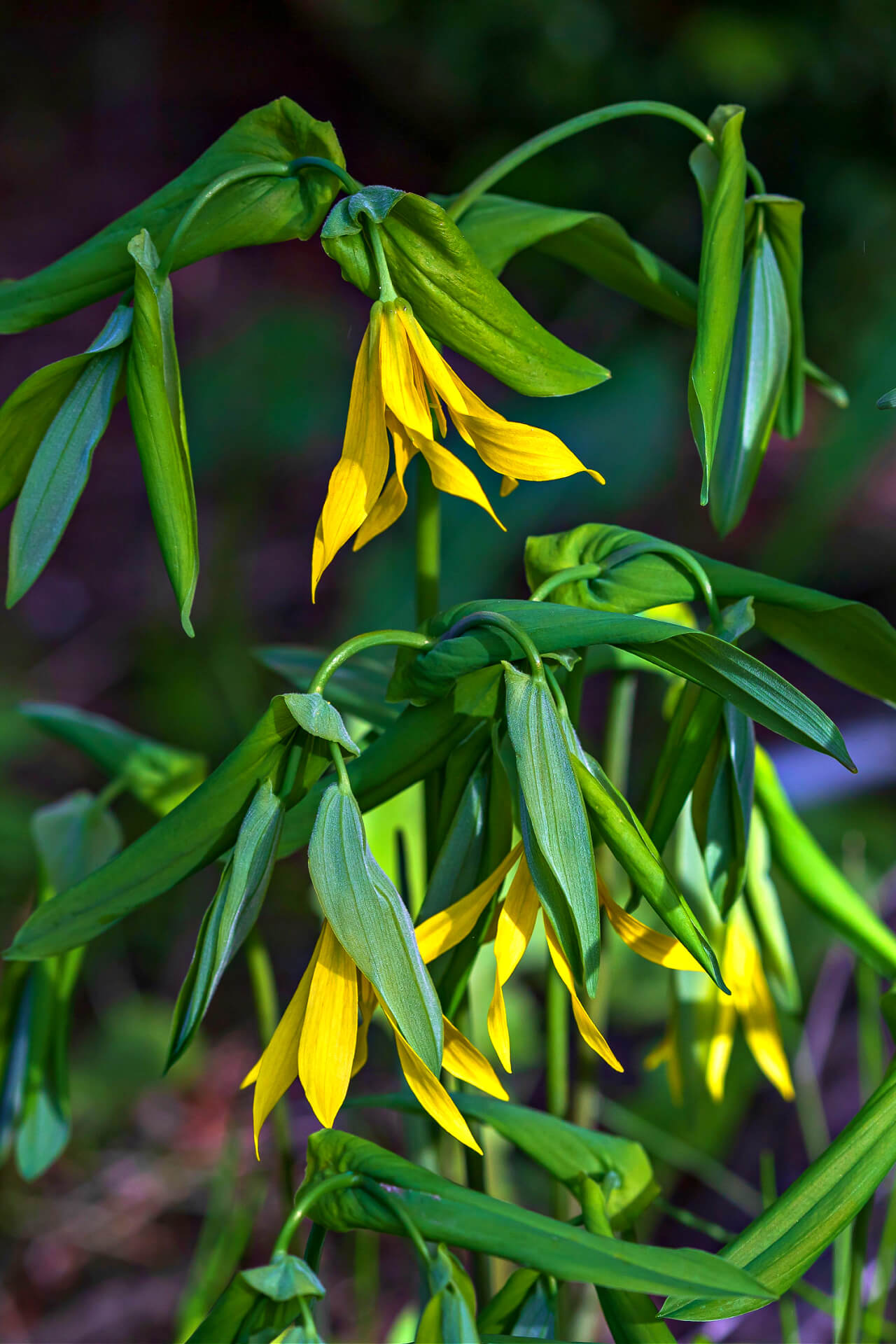Bellflower for sale
The charming Bellflower plant, commonly called Merry Bells, gets its name from its drooping stems and dangling yellow flowers, which resemble a choir of bells amidst your gardenscape. The lush perennial plant stems in a tight clump, and can spread up to, providing a meadow of lush greenery from its many leaves and its eye-catching blooms.
You can often find it under the cover of trees or along the shady borders of houses and gardens, as it prefers dappled sun and moist soil. Its golden yellow petals pair well with ferns, wild leeks, or any shade-loving blossom, making it the perfect addition to any woodland or wildflower garden.
Plant Details - Bellflower
Family: Colchicaceae
Light Requirement: Partial shade, Full shade
Water Needs: Moderate
Height: 30 in
Spread: 12 in
Growth Rate: Moderate
Soil Preference: Moist, well drained
Bloom Time: Mid-Late Spring
Flower Color: Yellow
Wildlife Value: Insect pollinators, seed distribution
Notable Characteristics - Bellflower
You can identify the Bellwort by its distinct arching, bell-like quality. The stems are soft and fleshy, which match its equally soft and paper-thin leaves. As the plant matures and blooms, the stems bend and droop downward, the oblong leaves and golden petals twisting as they reach the ground.
This lush plant has many medicinal uses, especially by the Ojibwe, Potawatomi, and Menominee tribes indigenous to the Great Lakes region. People use this plant topically to treat snake bites, swelling, and inflammation. When prepared properly, the plant can be ingested, taking advantage of the salicylic acid derivatives in the roots to treat a number of aches and pains.
Landscape and Maintenance: Bellflower
Bellflower is native to eastern and central North America and commonly thrives in Appalachia, the Great Lakes, and the Mississippi Valley regions. The bell-like plant prefers a woodland setting with moist, well-drained soil and full or partial shade, but is extremely hardy. It is drought-tolerant and can even tolerate occasional flooding.
Once established, Bellwort is beautiful and low-maintenance, attracting a variety of native bee species to pollinate it. The seeds in the center of its yellow flower are attractive to ants, who help carry and redistribute the seeds.
Exposure
Bellflower: Merry Bells thrive in full sun to partial shade. They prefer bright, indirect light or dappled sunlight, which helps them produce their vibrant blooms while avoiding the harshness of the direct afternoon sun. Ensure they have well-drained soil for optimal growth.
Height at Maturity
Under 12"
Usage
Shade Plant
Shipped As
Bare-root
Ships
USPS
Planting Zones
3-8




